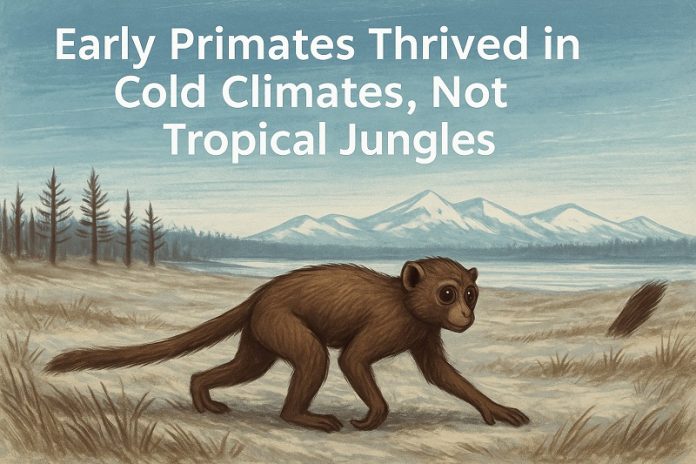
For decades, scientists believed that the very first primates—the ancient ancestors of monkeys, apes, and humans—evolved in lush, warm tropical forests. But new research suggests the story is very different.
According to a study from the University of Reading, primates actually first appeared in cold, seasonal environments around 66 million years ago, shortly after the age of the dinosaurs ended.
Using fossil evidence and advanced statistical models, the researchers reconstructed what Earth’s ancient environments looked like.
They found that the earliest primates most likely lived in North America, where summers were hot and winters were freezing.
This discovery, published in the journal PNAS, overturns the long-standing “tropical forest hypothesis” that has shaped evolutionary science for decades.
“For a long time, no one questioned the idea that primates came from tropical jungles,” said lead author Jorge Avaria-Llautureo. “But our findings flip that view on its head. These animals first evolved in cold, highly seasonal climates in the northern hemisphere.”
The research also sheds light on how primates adapted to survive harsh and changing conditions. One of the keys to their survival was mobility.
Primates that could travel long distances when their local environment shifted were more likely to survive and give rise to new species.
On average, those that relocated to very different, more stable climates moved about 561 kilometers, compared to just 137 kilometers for primates that stayed in similar but unstable habitats.
Some early primates may even have survived freezing winters by hibernating, much like bears do today.
By slowing their heart rates and sleeping through the coldest months, they could conserve energy until conditions improved.
Evidence suggests that this trait still exists in some primates: dwarf lemurs in Madagascar, for example, burrow underground and hibernate for months to escape the chill, keeping themselves safe under layers of soil, roots, and leaves.
It wasn’t until millions of years later that primates finally reached the tropical forests we often associate them with today.
The evolutionary journey began in cold climates, then moved through milder regions, then into dry desert-like environments, and eventually into the hot, wet jungles where many species now thrive.
Each time temperatures or rainfall changed suddenly, primates were forced to relocate. These migrations didn’t just help them survive—they also drove the creation of new species along the way.
The findings provide more than just a revised origin story. They also offer lessons for the present. “Understanding how ancient primates responded to past climate change helps us think about how living primates, including humans, may cope with the environmental changes we’re facing today,” said Avaria-Llautureo.
In short, our earliest ancestors weren’t jungle dwellers at all. They were tough survivors who adapted to cold, unpredictable climates—a reminder that resilience has been part of the primate story from the very beginning.



